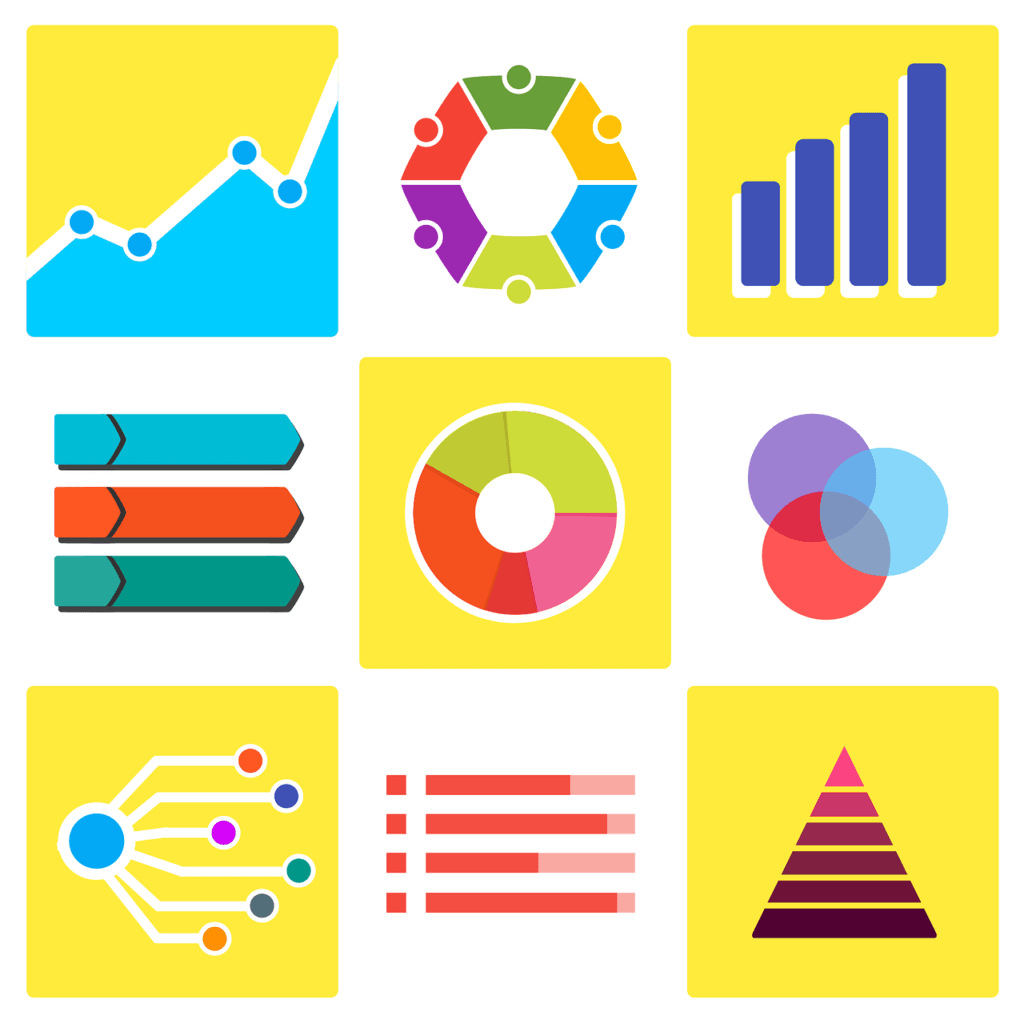Leads are the lifeblood of any business. But not all leads are created equal, and chasing after every single one wastes time, energy, and resources. That’s why prioritizing the right prospects is critical. The challenge? Doing it quickly and accurately in a fast-paced digital landscape.
This is where automating lead scoring comes in. With the right tools and strategies, you can assess the quality of each lead in real-time, ensuring your sales team focuses on high-value opportunities. Let’s break down how automation can transform your lead scoring process and boost your bottom line.
Step 1: Understand the Basics of Automated Lead Scoring
Lead scoring is the process of assigning a value—usually in the form of points—to leads based on their behaviors, demographics, and likelihood to convert. Actions like downloading an e-book, opening an email, or visiting your pricing page can increase a lead’s score, signaling their level of interest.
What Is Lead Scoring?
Traditionally, this process was manual, requiring teams to analyze data and assign scores themselves. While effective to some extent, manual scoring is slow and prone to error. Automation changes the game by using AI and algorithms to do the heavy lifting in real-time.
By automating lead scoring, you create a system that’s faster, more consistent, and scalable.
Why Automation Matters
In today’s business environment, speed is everything. A lead’s interest can fade within hours if they don’t receive timely follow-up. Automated lead scoring ensures that your sales team knows exactly who to prioritize the moment they show interest.
For instance, if a lead watches a product demo video and then visits your pricing page, automation can instantly bump their score and notify your sales team. This kind of immediate insight can make the difference between closing a deal and losing a prospect.
Automation eliminates delays, ensuring no opportunity slips through the cracks.
Real-Time Scoring vs. Traditional Methods
The real power of automation lies in its ability to score leads in real-time. Unlike traditional methods that rely on static rules or periodic updates, automated systems continuously analyze new data, adapting to each lead’s journey.
For example, a lead who interacts with your chatbot at 2 a.m. on a Saturday won’t have to wait until Monday for their score to update. Instead, your system processes their activity instantly, keeping your pipeline fresh and accurate.
Real-time scoring keeps your team agile, always ready to act on the most valuable opportunities.
Step 2: Lay the Foundation with Clean Data

Automated lead scoring is only as good as the data it relies on. Inaccurate or incomplete information can lead to flawed scores, misdirecting your team’s efforts. Start by auditing your data to ensure it’s clean, up-to-date, and relevant.
Why Data Quality Is Non-Negotiable
For example, if your CRM contains duplicate entries or outdated contact details, your scoring system might inflate a lead’s value. Tools like HubSpot or Salesforce offer data-cleaning features to help you streamline this process.
Clean data is the cornerstone of a reliable automated lead scoring system.
Integrate Data Across Platforms
Lead data often resides in multiple tools—your CRM, email marketing platform, and website analytics, to name a few. To make automated scoring work seamlessly, integrate these platforms into a unified system.
For instance, syncing your CRM with Google Analytics and email tracking tools allows your scoring system to analyze every interaction, from website visits to email clicks. The more connected your data sources, the more accurate your scoring will be.
Integrated data creates a 360-degree view of each lead, enhancing the precision of your scoring model.
Use Behavioral and Demographic Data
Effective lead scoring relies on two key types of data: behavioral and demographic. Behavioral data tracks actions like website visits, form submissions, or social media interactions, while demographic data looks at factors like job title, industry, and company size.
For example, a C-suite executive downloading your whitepaper might warrant a higher score than an intern doing the same. Similarly, a lead who clicks on your email CTA and visits your pricing page signals stronger intent than someone who only opens the email.
Combining these data types creates a scoring system that’s both nuanced and actionable.
Step 3: Choose the Right Automation Tools

Not all automation tools are created equal. When choosing a platform, prioritize features that align with your business goals. Look for tools that:
What to Look for in a Lead Scoring Tool
- Offer real-time scoring
- Integrate with your existing CRM and marketing stack
- Allow customization of scoring rules
- Provide clear, actionable insights
Popular options include Marketo, HubSpot, and Pardot. These platforms offer robust lead scoring features alongside automation workflows, making them ideal for scaling businesses.
The right tool simplifies implementation, ensuring your team gets up and running quickly.
Leverage AI for Predictive Scoring
Many modern tools incorporate AI to enhance lead scoring with predictive capabilities. Instead of relying solely on predefined rules, AI analyzes historical data to identify patterns and predict a lead’s likelihood to convert.
For instance, if your system notices that leads who watch two webinars within a week are highly likely to buy, it can automatically prioritize similar leads. This kind of predictive scoring takes your automation to the next level, making your process even smarter.
AI-powered tools continuously learn and adapt, ensuring your scoring system improves over time.
Scalability and Flexibility
As your business grows, so will your lead database. Choose a tool that can scale with you, handling larger datasets and more complex scoring criteria without slowing down.
For example, a tool that supports multi-channel data collection—like from webinars, chatbots, and social media—ensures you can adapt to changing marketing strategies. Flexibility is key to maintaining efficiency as your operations expand.
A scalable tool ensures your lead scoring system evolves alongside your business.
Step 4: Set Up and Customize Your Scoring Model

To create an effective scoring model, start by defining the actions and attributes that matter most to your business. This might include:
Define Your Scoring Criteria
- High-value actions, like requesting a demo or visiting the pricing page
- Job titles or industries that align with your ideal customer profile
- Engagement behaviors, such as email opens or webinar attendance
Assign scores to these criteria based on their importance. For example, downloading a product guide might add 10 points, while requesting a demo adds 50. Tailor the weights to reflect your unique sales process.
A clear scoring model ensures consistency and aligns with your business goals.
Incorporate Negative Scoring
Not all behaviors are positive signals. For instance, leads who unsubscribe from your emails or show no engagement over time might warrant a lower score. Incorporating negative scoring ensures your team doesn’t waste resources on disengaged prospects.
For example, a lead who hasn’t interacted with your brand in six months might lose 20 points, signaling a need for re-engagement campaigns. Negative scoring helps you keep your pipeline focused and efficient.
Balancing positive and negative scores creates a more accurate picture of lead quality.
Test and Refine Your Model
Once your scoring model is live, monitor its performance closely. Are high-scoring leads converting as expected? Are lower-scoring leads being overlooked unfairly? Use this feedback to refine your criteria and weights.
For instance, if you notice that leads attending virtual events convert more frequently than anticipated, adjust your scoring to reflect their value. Regular testing ensures your model stays aligned with real-world outcomes.
Continuous optimization keeps your scoring system relevant and effective.

Related: Check out our free tools:

Step 5: Act on Insights in Real-Time
With automated lead scoring in place, your sales team should focus exclusively on high-priority leads. Use tools to notify reps the moment a lead crosses a predefined score threshold, ensuring timely follow-up.
Prioritize Sales Outreach
For example, if a lead reaches 80 points by engaging with multiple pieces of content, your system can send an alert with a suggested action plan. This immediate visibility allows reps to strike while the iron is hot.
Prioritized outreach maximizes your team’s productivity and improves conversion rates.
Align Marketing and Sales Efforts
Automated lead scoring isn’t just a sales tool—it’s a bridge between marketing and sales. Share scoring insights with both teams to ensure they’re aligned on which leads to prioritize and how to engage them.
For instance, if marketing sees that leads who attend webinars tend to score high, they can increase webinar promotions. Meanwhile, sales can prepare tailored pitches for these engaged prospects.
Collaboration powered by shared insights drives better results across your organization.
Use Scores to Personalize Follow-Ups
Lead scores provide valuable context for personalization. Use them to tailor your outreach, ensuring each prospect receives relevant, timely communication.
For example, a high-scoring lead might receive a direct call from sales, while a mid-scoring lead gets a nurturing email with additional resources. This personalized approach builds trust and keeps leads moving through the funnel.
Personalization driven by lead scores enhances the customer experience and boosts conversions.
Step 6: Overcoming Challenges in Automated Lead Scoring

While automated lead scoring offers significant advantages, its effectiveness depends on the accuracy of the scoring system. If your model assigns high scores to low-quality leads or underestimates valuable prospects, your sales team could lose trust in the system.
Ensuring Accuracy in Scoring
To address this, regularly review the scoring criteria and compare the results with actual outcomes. For example, examine whether high-scoring leads are converting at the expected rate. If not, refine your criteria or incorporate additional data points like behavioral trends or purchase history.
Accurate scoring ensures that your sales team remains confident in the system and motivated to act on its insights.
Balancing Automation and Human Insight
Automation is powerful, but it shouldn’t completely replace human judgment. While your system may identify high-scoring leads, it’s still essential for your sales team to evaluate context and nuances that algorithms might miss.
For instance, a lead with a high score might still require a customized approach based on their specific industry or company size. Encourage your sales team to use scoring as a guide, not a strict rule, ensuring they leverage their expertise to tailor interactions.
A balance between automation and human insight creates a more effective and flexible lead prioritization strategy.
Adapting to Evolving Market Dynamics
The behaviors and attributes that define a high-intent lead can change over time due to market shifts, new products, or changes in customer preferences. An effective automated lead scoring system must adapt to these changes.
Regularly update your scoring model to reflect new trends. For example, if virtual events become a more critical touchpoint for your audience, adjust your scoring to give more weight to webinar attendance. Stay proactive by reviewing your system quarterly or after significant market changes.
Adaptability ensures your scoring system remains relevant and continues to deliver high-quality leads.
Step 7: Scaling Automated Lead Scoring for Growth

As your business grows, so will the number of channels where you engage with prospects. Ensure your automated lead scoring system can process data from all relevant touchpoints, such as social media, paid ads, and in-app interactions.
Expanding to Multiple Channels
For example, integrate social media listening tools to capture leads who engage with your posts or ads. Similarly, track app usage data to score prospects based on how they interact with your platform. The more channels you include, the more comprehensive your scoring becomes.
Scaling across channels allows you to capture and prioritize leads from every corner of your marketing ecosystem.
Integrating Predictive Analytics
Once your lead scoring system is running smoothly, consider enhancing it with predictive analytics. Predictive tools use historical data and machine learning to identify patterns that indicate a lead’s likelihood to convert.
For instance, if past data shows that leads who attend three webinars in two months often make a purchase, your predictive system can automatically flag similar leads for follow-up. This predictive layer adds an extra dimension of insight, allowing your team to act on opportunities even faster.
Predictive analytics transforms lead scoring from reactive to proactive, positioning your business for sustained growth.
Expanding to Global Markets
If your business operates in multiple regions, ensure your lead scoring system accounts for cultural, demographic, and behavioral differences. A lead in Europe might interact with your brand differently than one in Asia, requiring localized scoring criteria.
For example, while email engagement might be a strong intent signal in one market, social media interactions could be more significant in another. Work with regional teams to tailor your scoring model for each market.
Localized scoring ensures you prioritize the right leads no matter where they are, driving global efficiency.
Step 8: Measuring Success and Optimizing Continuously

To gauge the success of your automated lead scoring system, track performance metrics like:
Track Key Metrics
- Conversion rates of high-scoring leads
- Average time-to-close for prioritized leads
- Revenue generated from high-priority opportunities
For example, if high-scoring leads consistently convert 40% faster than low-scoring ones, it’s a clear sign your system is working. Conversely, if results fall short, investigate potential gaps in your scoring criteria or data quality.
Tracking metrics ensures your lead scoring system delivers measurable value to your business.
Gather Feedback from Teams
Your sales and marketing teams are on the frontlines of lead engagement. Regularly gather their feedback to identify strengths and weaknesses in your scoring system. For example, if sales reps feel that certain high-scoring leads lack genuine intent, revisit your model to adjust the criteria.
Similarly, marketing teams can share insights about new campaigns or touchpoints that might influence lead behavior. This feedback loop ensures your scoring system evolves alongside your team’s needs.
Collaboration keeps your scoring system aligned with real-world outcomes and team priorities.
Celebrate Wins and Scale Further
Automated lead scoring isn’t just a tool—it’s a strategic asset. Celebrate its impact by highlighting success stories, such as major deals closed or significant time saved thanks to prioritized outreach. Sharing these wins reinforces the system’s value and encourages team buy-in.
As your confidence in the system grows, explore additional use cases, such as scoring leads for upselling or cross-selling opportunities. The more you integrate automated scoring into your operations, the greater its impact will be.
Scaling success ensures your automated lead scoring system remains a cornerstone of your growth strategy.
Conclusion: Lead Scoring, Elevated by Automation
Automating lead scoring isn’t just a time-saver—it’s a game-changer for businesses looking to prioritize high-value prospects in real-time. By combining clean data, smart tools, and a well-defined scoring model, you can ensure your team focuses on the leads that matter most.
The result? Faster sales cycles, higher conversion rates, and a more efficient use of resources. For CEOs, the message is clear: embracing automated lead scoring isn’t just a smart move—it’s an essential step toward sustained growth.
Start implementing these strategies today, and watch as your lead scoring evolves from a manual chore to a powerful driver of success. With automation, you’re not just keeping up—you’re staying ahead.
READ NEXT:
- Are Vanity Metrics Killing Your Marketing Efficiency? Here’s What to Track Instead
- Pinpointing Digital Marketing ROI: Why Your Metrics Aren’t Telling the Full Story
- Unlocking Real ROI in Digital Marketing: The Hidden Costs Draining Your Budget
- How Misaligned Marketing Funnels Are Blocking Your ROI Potential
- Best Digital Marketing Agency In Santa Ana, California
- Best Digital Marketing Agency In San Francisco, California



















